Summer solstice (Jāņi in Latvian) is celebrated on 23rd and 24th June where I live. And, yes, I do know that solstice is actually a few days before that. So it goes. Here Jāņi is one of the major celebrations, and some of the traditions, mostly remnants of the good old pagan days, are pretty fun. And somehow Latvian Christians who celebrate what is essentially a pagan holiday do not feel any cognitive dissonance. But hey, it’s fun.
Because of COVID-19, this year there was no large public celebration. Instead everybody had to celebrate at home with their family. Thus this time I will write about how Jāņi are usually celebrated in this part of the world in addition to what we could do this year.
During Jāņi, fires are lit and burned from sunset till next morning. In pagan days people believed that the light of the fire bestows power and fertility on the fields and people on which it shines. Nowadays people burn fires, because it is fun.


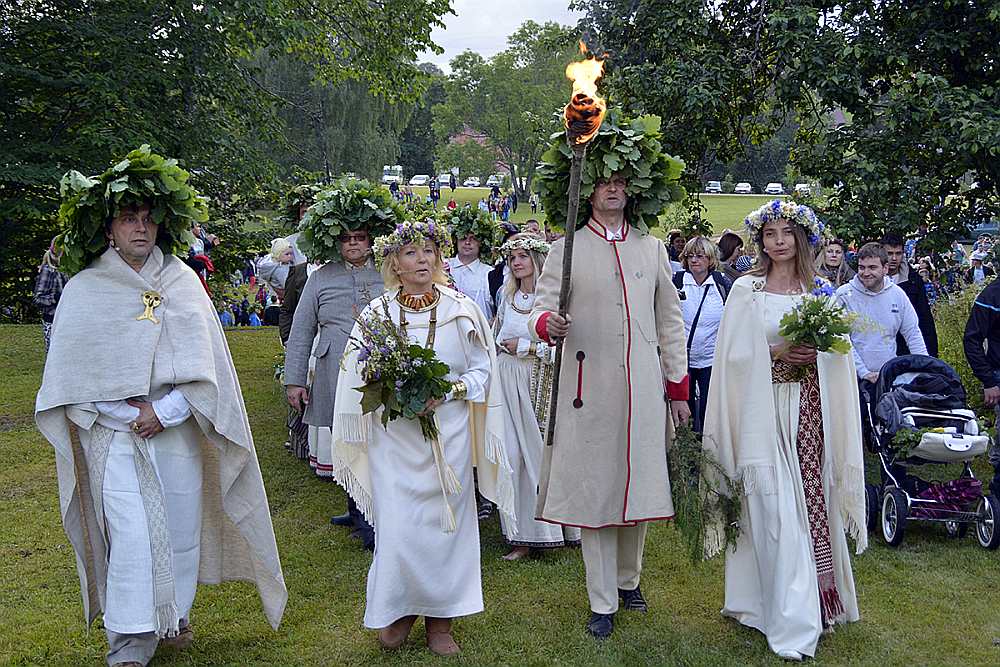
When people celebrate in large groups, then also the fire is large and impressive and there are various fun rituals about it.
When people celebrate at home with their family, the fire is much more modest in size. Also, leaping over the Jāņi fire is said to bring good luck and health through the coming year. Obviously, that’s something you can do only when you have a small fire, and frankly, to me this part sounds risky and I have never tried it.
During Jāņi, people decorate everything with plants. In the countryside, people get their decorations in the nearest meadow. In Riga, we have a zāļu tirgus (literally: a grass market) instead. Basically, it’s an outdoor market in which you can buy various plants and all kinds of other nice stuff.






In Latvian they say “visa laba Jāņu zāle, kas zied Jāņu vakarā,” which translates as “all plants that bloom on the Jāņi evening are good decorations.” As you must have noticed from the photos, people mostly use various flowers that grow in meadows as well as oak leaves and branches. Acorus calamus plants are also commonly used. (Photos are from here.)
Markets that happen during holidays are also an opportunity to purchase various cool handmade items.


Of course, there are also foods associated with this holiday.

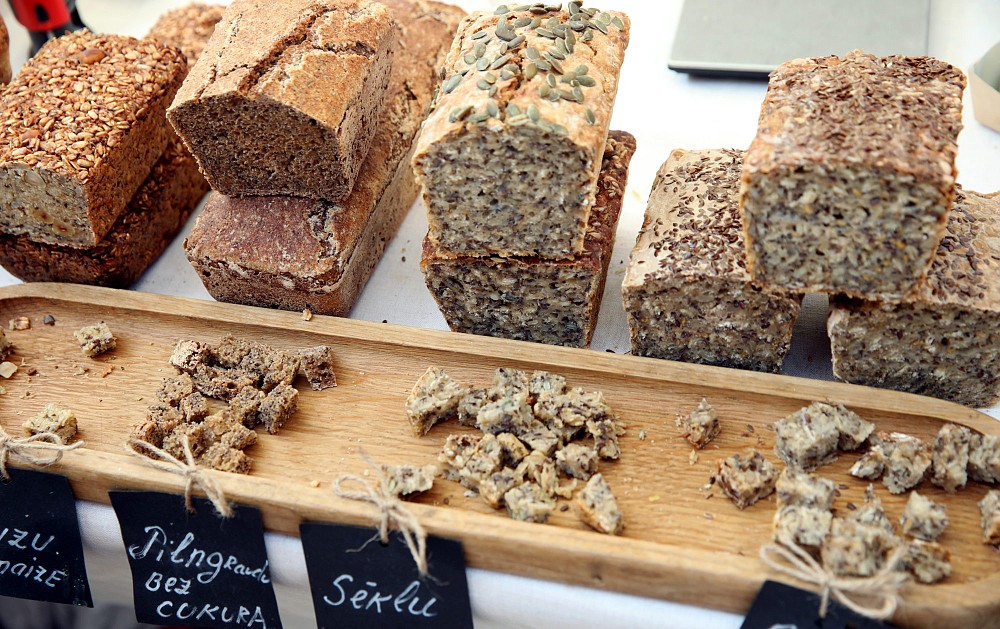
Various breads are always there for every holiday.
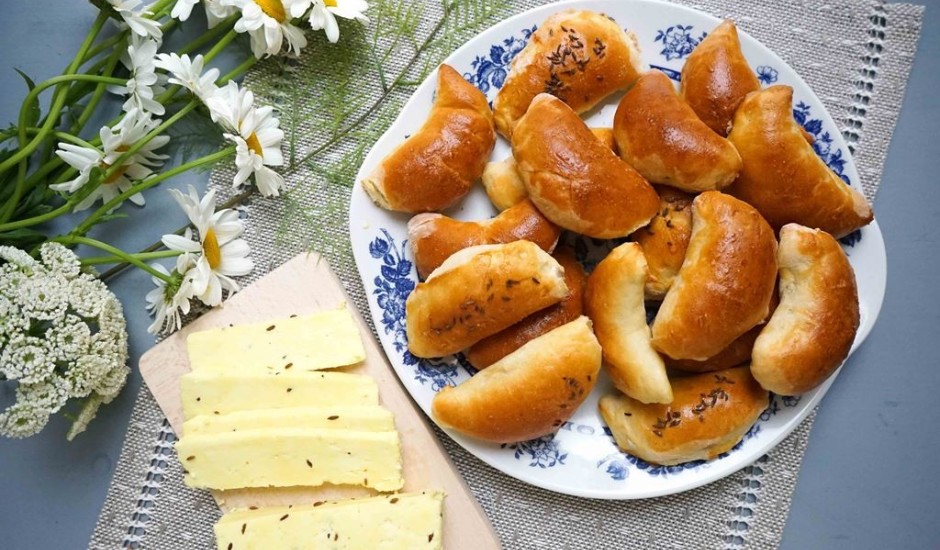
These are called speķa pīrādziņi in Latvian (meaning “fat meat pie” in diminutive form). This is the universal holiday food that people make for every single holiday out there. These are crescent-shaped baked pastries containing a filling of finely chopped bacon cubes, fatback, and onion.
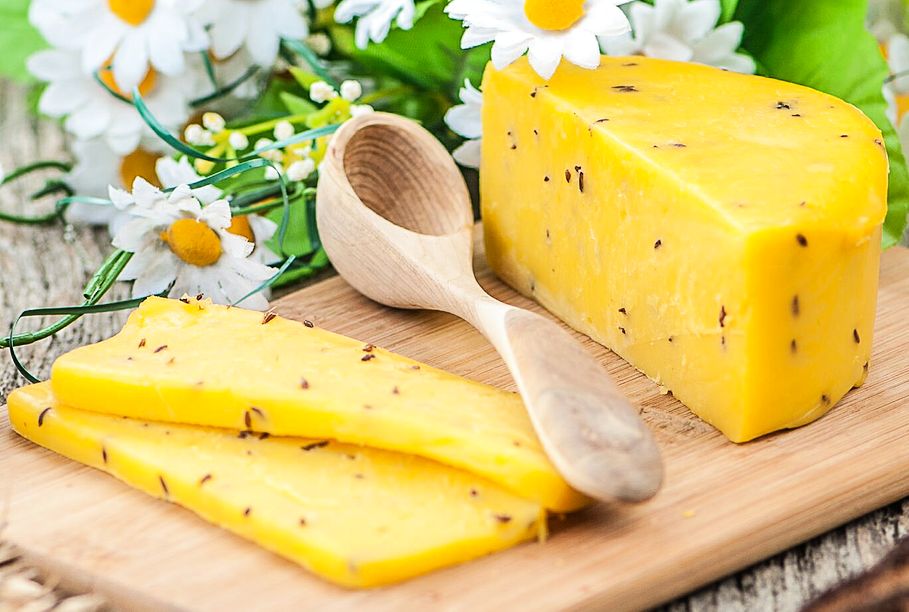
Jāņi cheese.
During Jāņi, people are expected to eat Jāņi cheese and drink beer. Jāņi cheese (Latvian: Jāņu siers) is a Latvian sour milk cheese, traditionally eaten on Jāņi, the Latvian celebration of the summer solstice. This cheese is soft and slightly grainy, it’s made from raw quark and fresh milk, caraway seeds being added during cooking as a spice.
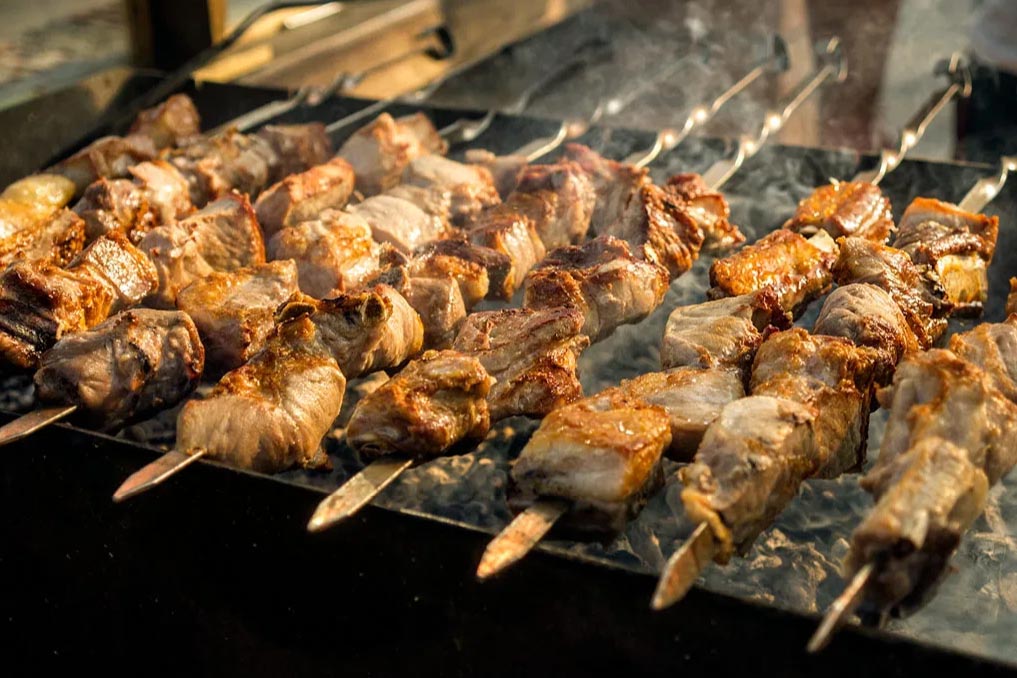
Shashlik.
And then there’s also shashlik. This thing became a staple in Latvian cuisine relatively recently. People who prefer to celebrate Jāņi according to older pagan traditions don’t make shashlik. Those who celebrate in larger groups with huge fires don’t make it either. But pretty much everybody who celebrates at home with a small fire makes some shashlik. If you already have a small fire suitable for cooking food on it, you might as well use it for cooking some meat. (Actually, yesterday I ended up with chicken drumsticks cooked on a fire, my boyfriend’s family members preferred to cook those instead this time.)
And, of course, as with most celebrations, there’s music and dancing. Usually that means ethnic dances at this time of the year.


For people who are into ethnic costumes, Jāņi is an excuse to wear one. And people who like ethnic dances tend to wear Latvian traditional costumes while performing. And those look pretty cool. Moreover, there’s a huge variety of them. Every Latvian region has its own unique fashion. Here are two examples from different regions:

Most folk costumes people wear during holidays are based on the clothing people wore back in 19th century. But one can also pick fashion from any other time period.
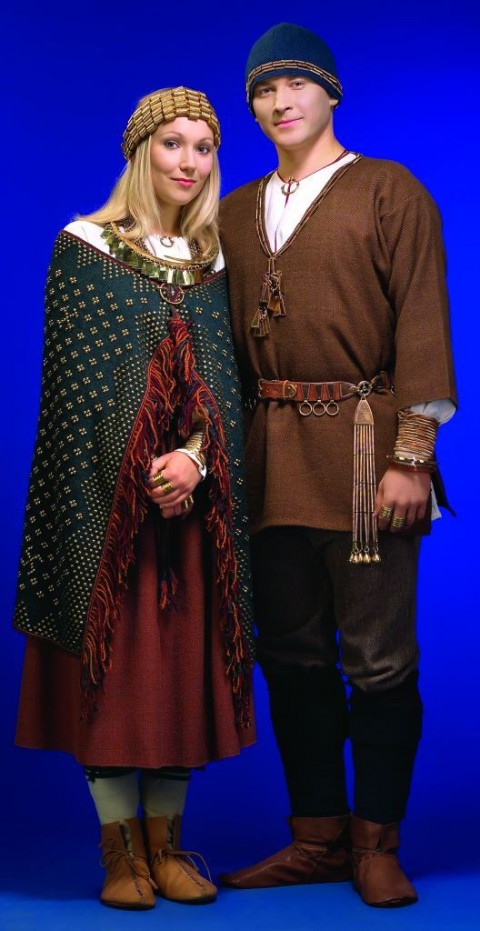
Clothing from 12th to 13th century, from Latgale region.
Another Jāņi tradition is searching for a fern flower. Back in pagan days, people actually believed that fern plants bloom on the Jāņi night, during midnight, for a short period of time. Fern flower was believed to have magical properties, whoever found one would get all their wishes fulfilled and get all kinds of other perks. Thus people went to forests and looked for a fern flower. Maybe. Or maybe they just went to have sex in the woods.
In modern days, in Latvian language “searching for a fern flower” is a euphemism for “having sex in the woods.” Personally, I have done that often enough that I’m not going to discourage anybody from looking for fern flowers, but I guess I am starting to get old—nowadays I tend to just prefer a soft and comfy bed. No mosquitoes, no ticks, and no sharp pine needles in my back are nice.
Another Jāņi tradition is wreath making. Wreaths made of flowers, grasses and oak leaves are woven and worn on the head. As you probably noticed by now from all the photos, different types of plants are used to make wreaths for males and females. Women and girls wear wreaths made from flowers, grasses and herbs. Men and boys wear wreaths made of oak leaves. In pagan days, various plants symbolized different things and there were different superstitions about them. As with most traditions, wreaths were expected to bring their wearer good fortune, health, strength, or blessings.
Now that people no longer believe all these pagan myths, we make wreaths, because they look cool and are fun to have. Here are some examples of wreaths worn by women:



Men get oak leaves instead.
One of the nasty problems about various celebrations is that old traditions are sort of sexist, at the very least they enforce gender expectations—men are supposed to do this thing while women are supposed to do that other thing. For example, in past women were expected to cook the cheese, prepare all the pastries, weave the wreaths, decorate the home with plants. Men were expected to get drunk on beer. Sounds fair, right?
Their dress codes and expected appearance differed as well. Flower wreaths for ladies, oak leaf wreaths for men. Never mind the inherently different men’s clothes versus women’s clothes. By the way, gender roles are the main reason why I never liked Latvian folk dances. Opposite sex couples and different dance steps for men and women were the rule.
So far all the photos in this blog post were from previous years and not mine. (It’s not like you can have crowds this year due to COVID-19.) The next two photos are mine and from two days ago. This year I spent the holiday with family. We were mostly hanging out together and eating tasty foods. Jāņi cheese is great and I’ll never say “no” to speķa pīrādziņi.

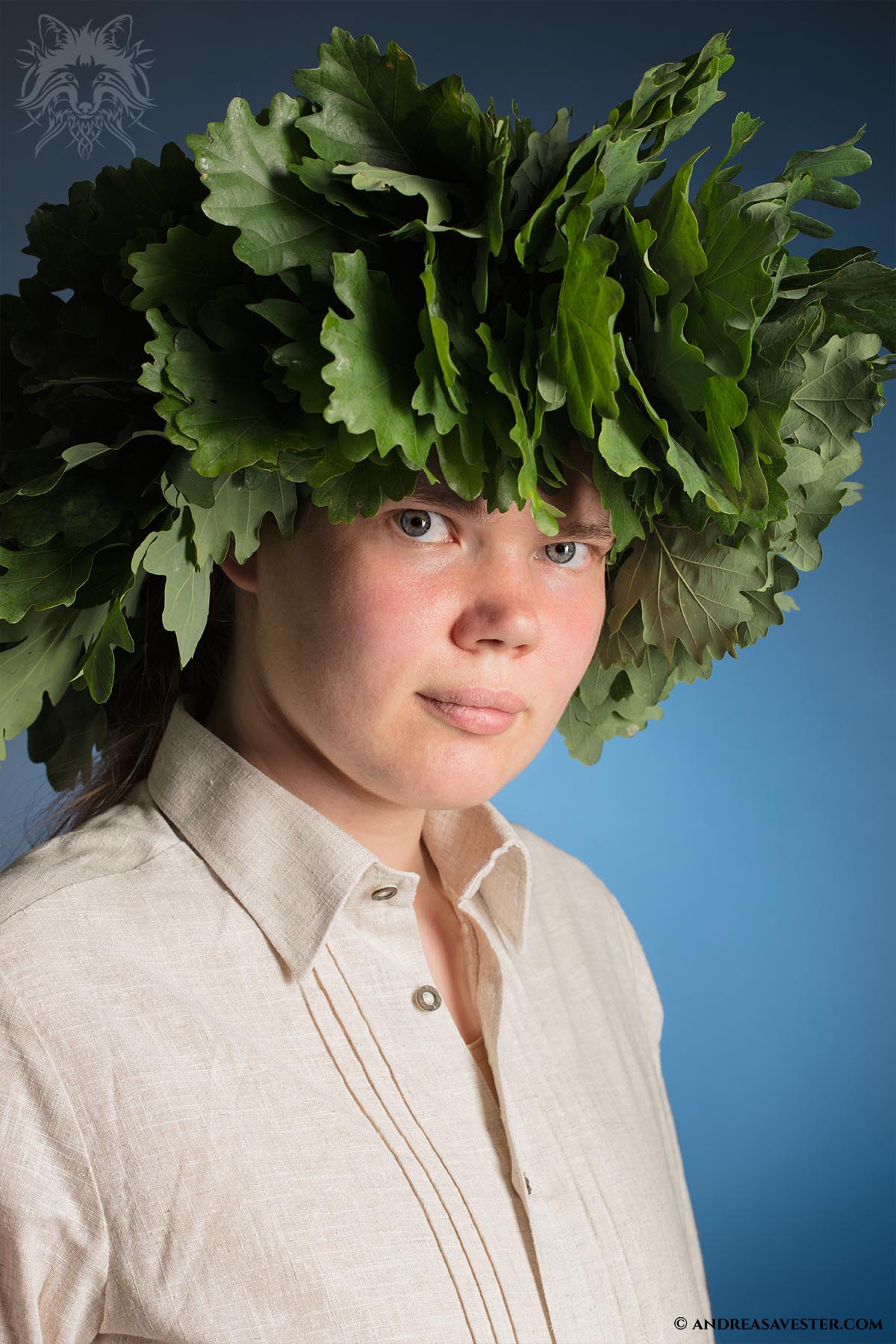
And one of the cool things about being an adult is that I can do with my appearance whatever I want, and I no longer have to listen to “helpful” adults reminding me that this or that thing isn’t for girls.
As for celebrations and old traditions, we can keep the fun parts and ditch the sexist gender expectations. There’s no reason why cheese must be cooked by female hands just like there’s no reason to enforce some dress code based on what genitalia some person has.
And some parts of the old traditions can be fun. I don’t need to believe in pagan myths to perceive burning fires or decorating my home with plants as fun and simply do it for the sake of enjoyment.

I only ever knew those meat buns as pīrāgi. Well, they look the same as the things my mum made, anyway. Yum.
You look great in both photos, I love that shirt!
The whole festival sounds like a lot of fun as long as the work is evenly distributed.
Ah, the blessing and curse of ancient traditions. I figure there’s some strife between belonging somewhere, and being truly free.
Finnish juhannus (celebrated on the Saturday between 20-26 June) is also a major celebration, but not generally as pictoresque or bound by traditions as described here – at least nowadays. It’s mostly about getting out to the country, barbecue, sauna, booze and burning scrap wood in the bonfire. At least older people used to cut birch twigs and whole birch saplings for decoration, as well as for bath whisks to be used in the sauna.
The use of oak and Acorus sounds exotic to me, since those plants are quite rare up here. Birch saplings grow everywhere, but I couldn’t imagine mutilating an oak for the twigs, and I haven’t ever even seen Acorus in the wild. However, Iris pseudacorus – literally named so because its leaves resemble Acorus – is common in wetlands and blooms in June with pretty yellow flowers. It’s a plant I personally associate with midsummer, perhaps more than anything else.
For me, the most important thing about midsummer is simply walking out at night (not on any specific date), admiring the light and the quiet and the blooming vegetation. Nowadays I don’t even bother to leave my nice suburban neighborhood for that purpose.
Rob Grigjanis @#1
Pīrāgi is the generic term, like the English word “pie.” When these pastries are small, then the word is typically used in diminutive, namely, pīrādziņi. And you can also cook these with different ingredients, for example kāpostu pīrāgi (or kāpostu pīrādziņi) refers to ones filled with cabbage.
lumipuna @#3
For me doing enjoyable things (that happen to stem from old traditions) isn’t about belonging, instead it’s about having fun. I’m perfectly happy to celebrate also various events that are from all over the world as long as it is fun and pleasant.
I don’t feel that I belonged to any specific geographical location or culture.
This is an accurate description of how many Latvians, especially those who are younger, treat Jāņi. How (and whether) people celebrate depends on the person. Some care about the old traditions. Others just care about tasty food and an opportunity to get drunk.
On my boyfriend’s real estate oaks grow like weeds. Literally. When he bought this land, he had so many oak seedlings and small oak trees that he has to cut most of them in order to prevent oak trees from growing too close to each other.
Wild Acorus calamus plants grow in a few places, but they aren’t very common. In the wild we have cattails all over the place instead. Here Acorus calamus are also used as food, for example I have seen tea made from ground Acorus calamus roots. Most Acorus plants used for decorations (or food) are cultivated rather than wild. They are a common choice for people who want to plant something in their pond.
Loved your post. Very interesting. Also, although I’m not usually a very visual person, I do like looking at traditional dress.
Really nice carving and reedwork, wow. I am also jealous of your shirt.
Here in California, the Coast Live Oak has teeny tiny leaves compared to the ones you are wearing, so I was a bit confused about whose circlet was supposed to be whose in the upper photos.
seachange @#7
That shirt cost me about 3 euro, it is from a second hand store. Lesson: before buying new stuff, it is worth looking around at what you can get used. It’s cheaper and more environmentally friendly.
Here we have European oaks, Quercus robur.
The use of “pīrāgs” to mean “pie” and other filled pastries of various types is actually a fairly modern change in the word’s meaning. Traditionally, “pīrāgs” is just the same old “speķa pīrādziņš”, with other “pīrāgi” being also small in size (but 90% of the time, a real “pīrāgs” should be full of bacon). Because the language I learned was pre-war Latvian, it was utterly confusing to realize that when people said “ābolu pīrāgs” they meant a full-sized apple pie (which we called “ābolkūka”) and not a small dainty apple-filled pastry you could eat with your hands.